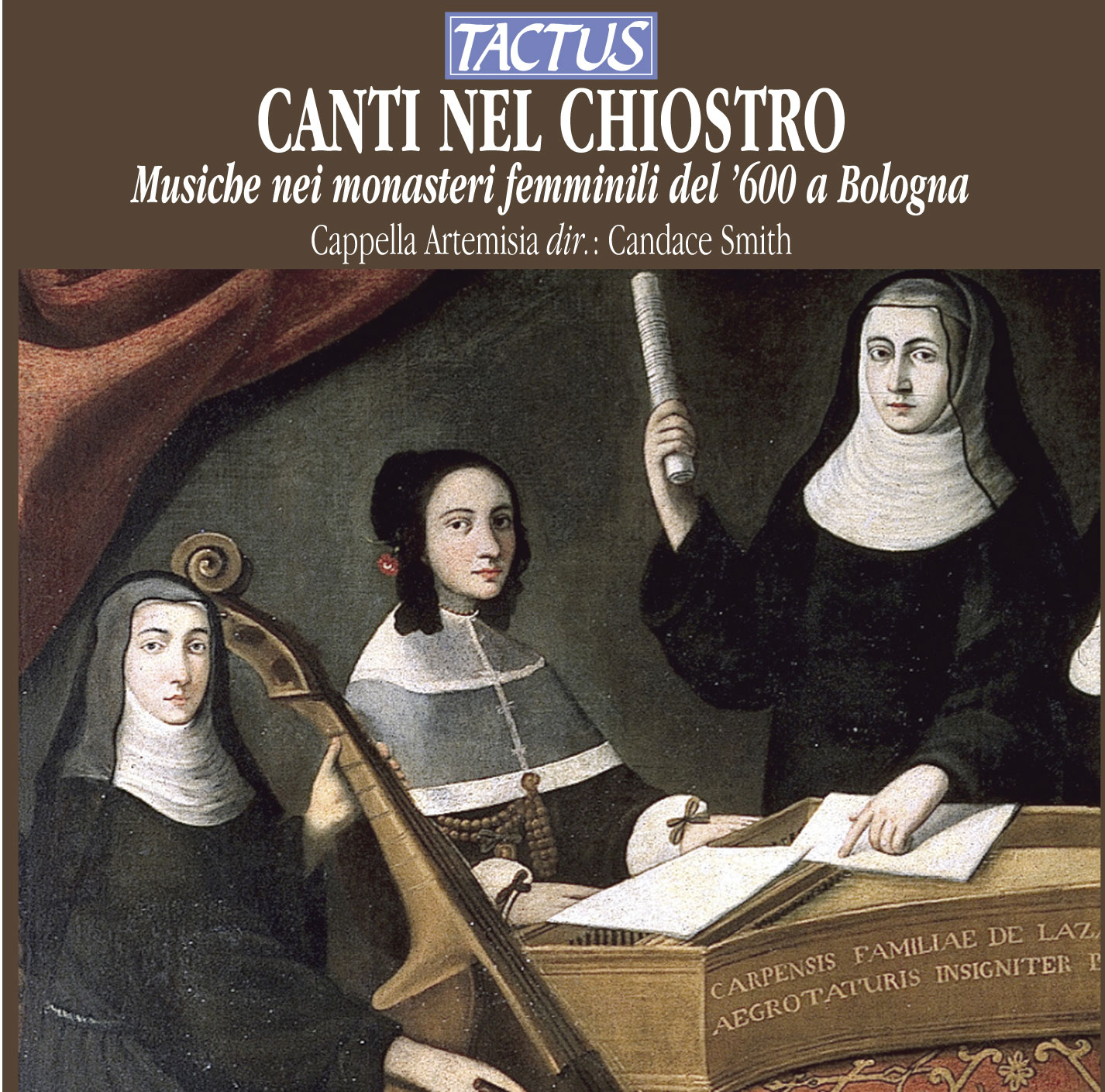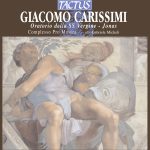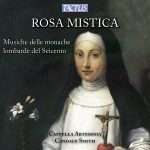AA.VV.
Nearly all the nunneries practice music, both playing numerous sorts of musical instruments, and singing.
And in some convents there are such rare voices that they seem angelic, and like sirens entice the nobility of Milan to go and hear them”.
With these words the Milanese historian Paolo Morigia gives us a picture of the musical situation in Italian convents around 1595.
The convent represented, for women of the 16th and 17th centuries, the only honorable choice available outside of marriage.
However, the practice of forced monasticism during this period, although officially condemned by the church, was in fact rampant.
The principal reason was to protect the family fortunes which would otherwise risk dispersal through the payment of the large dowries required for marriage.
Convents fulfilled the task of completing a young girl’s rudimentary education, including music among the subjects.
And music which, in some form, was practiced every day within the convent walls, was highly valued: a girl with musical gifts might benefit from a reduction of her “spiritual” dowry upon entering the convent, which in the wealthier houses could be quite expensive.
The importance of music to the nuns is understandable, for beyond the simple pleasure and solace which it undoubtedly provided, it also represented an important link with the outside world.
However, music was discredited by moralists as an impelling danger to the spiritual well-being of the nuns, and church authorities did everything possible to limit and even suppress its use.
According to the rules drawn up in 1580 by Gabriele Paleotti, archbishop of Bologna, the use of polyphony was strictly limited to feast days (once a year); musical instruments other than the organ, occasionally the bass viol, and the harpsichord inside the cells, were banned; and, perhaps most significantly, unlicensed musical education from outside teachers was completely prohibited.
Similar rules continued to be published throughout the 16th and 17th centuries—an encouraging sign that they were not being adhered to.
Paleotti in Bologna and other authorities elsewhere ordered the organs to be moved into the inner church and the organ windows which faced the public outer church to be walled up.
Considering such a dramatically unfavorable situation, it is thus indeed remarkable that the cloistered nuns were able to produce any music at all, let alone the high quality performances for which they were renowned.
And yet a surprisingly large number of printed collections of music between circa 1580 and 1700 were either dedicated to, written by, or referred to nuns.
In the Bolognese area alone, at least 10 such collections appeared before the end of the seventeenth century.
Tracklist
Biondi, Giovanni Battista
Compieta con letanie che si cantano nella Santa Casa di Loreto, et motetti
1 - Compieta con letanie che si cantano nella Santa Casa di Loreto, et motetti: Cantabant sancti (3:00)
Banchieri, Adriano
Messa solenne a 8
2 - Messa solenne a 8: Gaudeamus omnes (3:25)
Fattorini, Gabriele
Motets, Book 2
3 - Motets, Book 2: Praeparate corda vestra (2:47)
Arresti, Giulio Cesare
Messa e Vespro dell Beata Virgine
4 - Messa e Vespro dell Beata Virgine: Ad cantus (4:05)
Micheli, Romano
Psalmi ad officium Vesperarum, Book 1
5 - Psalmi ad officium Vesperarum, Book 1: Dixit Dominus (4:27)
Anonymous
Litanie della passione: Kyrie [1670]
6 - Litanie della passione: Kyrie [1670] (3:26)
Banci, Giovanni
Sacred Concertos, Book 1
7 - Sacred Concertos, Book 1: Litanie Mariane (5:50)
Trombetti, Ascanio
Motetti accomodati per cantare e far concerti, Book 1
8 - Motetti accomodati per cantare e far concerti, Book 1: Regna terrae a 8 (3:16)
Reina, Sisto
Fiorita corona di melodia celeste, Op. 7
9 - Fiorita corona di melodia celeste, Op. 7: Dialogo di Lazaro (7:14)
Quintanilla, Giacinto
Motetti a Voce Sola, Book 1
10 - Motetti a Voce Sola, Book 1: Audite fideles (4:30)
Vizzana, Lucrezia Orsina
Componimenti musicali de motetti concertati
11 - O invictissima (2:47)
12 - Ave Stella (2:40)
13 - Protector noster (2:51)
Reina, Sisto
Fiorita corona di melodia celeste, Op. 7
14 - Fiorita corona di melodia celeste, Op. 7: Ferte Blandos (4:37)
Banchieri, Adriano
Messa solenne a 8
15 - Beata es tu (2:55)
16 - Laetamini a 4 (1:49)
Banci, Giovanni
Sacred Concertos, Book 1
17 - Sacred Concertos, Book 1: Ego flos campi (5:31)
Vernizzi, Ottavio
Caelestium applausus variis
18 - Caelestium applausus variis: Vidi portam civitatis (2:34)
- Composer: AA.VV.
- Performers: Cappella Artemisia with Historical Instruments – voices: Angela Albanese, Alessandra Fiori, Frida Forlani, Antonella Lalli, Gloria Moretti, Rebecca Reese, Candace Smith, Miriam Spano, Silvia Testoni, Patrizia Vaccari. Viola da gamba: Bettina Hoffmann; Theorbo: Francesca Torelli; organ: Miranda Aureli, harpsichord: Miranda Aureli, Patrizia Vaccari. Conductor: Candace Smith
- Historical Period: Early Baroque
- Code: TC 600001
- Edition: 1995
- Barcode: 8007194100464
- Set: 1
- Total tracks: 18
- Total duration: 01:04:52







